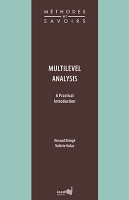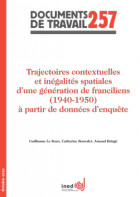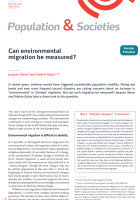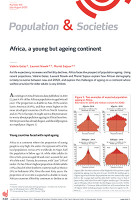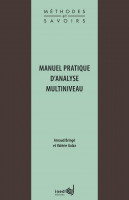
Manuel pratique d’analyse multiniveau
Collection : Méthodes et savoirs
n° 9, 2017, 120 pages
[Practical manual of multilevel analysis]
Contents
Introduction. Simultaneous analysis of information at different levels
Chapter 1. From research questions to multi-level modeling
I. How to define coherent groups
II. Multi-level modeling
Chapter 2. Preparing the database
I. Presenting the data used
II. Integrating contextual data
III. Exploring the data to be used in multilevel analysis
Chapter 3. Logistic models, contextual models
I. Doing logistic regression at the individual level
II. Working to take into account district influence
Chapter 4. Implementing multilevel modeling using SAS®, Stata® and R software
I. Choosing a modeling strategy
II. Setting up a logistic multilevel model
III. Multilevel modeling of schooling in Kenya
Chapter 5. Interpreting non-results and doing complementary analyses
I. Calculation procedures
II. Implementation problems
III. Why use multilevel regression? Is it necessary?
IV. Retrieving and reusing some specific results
V. Taking the data further
VI. Laying the groundwork for a multilevel event history analysis
Conclusion
Internet links and sources
References
Appendices
[Practical manual of multilevel analysis]
The Practical manual is addressed to all statistical database users wishing to learn or enhance their knowledge of multilevel analysis. The aim is to guide the reader through the steps of this process.
Demography brings together several different observation levels, ranging from entire groups or populations to the individuals that comprise them and from individuals to the events that mark their lives from birth to death. Description and analysis of these individual events simultaneously bring into play the individual level and that of the population those individuals belong to. Using different observation levels in a single statistical analysis enriches the quantitative approach with an additional dimension.
The aims here are to give readers a solid grounding in multilevel model design; to detail and illustrate multilevel modeling using the concrete example of schooling in Kenya; to present a number of different statistical software programs; to explain how to implement a multilevel model, what is required prior to implementation, what users may expect and what limitations may be encountered; and last, to suggest readings for further acquisition of multilevel techniques and analysis.
The authors have based their highly didactic guide on the practical use of the three main and most widely used programming tools: Stata®, SAS® and R.
The manual is the practical complement to two other INED Publications works:
Du groupe à l’individu: synthèse multiniveau, Daniel Courgeau, Les Manuels, 2004;
Biographies d’enquêtes, Groupe de réflexion sur l’approche biographique, Méthodes et Savoirs 3, republished 2009.
Arnaud Bringé heads INED’s Statistical Methods Service. Together with his team, he ensures that demography researchers are trained in the most recent statistical methods, assisting them in establishing statistical databases and developing survey analysis solutions. He is also active in setting up and monitoring a number of research projects.
Valérie Golaz is an INED researcher specialized in data collection and analysis methods, demographic event history analysis, and multilevel modeling, as well as methods for connecting quantitative and qualitative analysis. She studies the demography of global South populations and family and intergenerational ties.
- The English translation of this book has been published in OpenEdition in the collection Méthodes & savoirs


